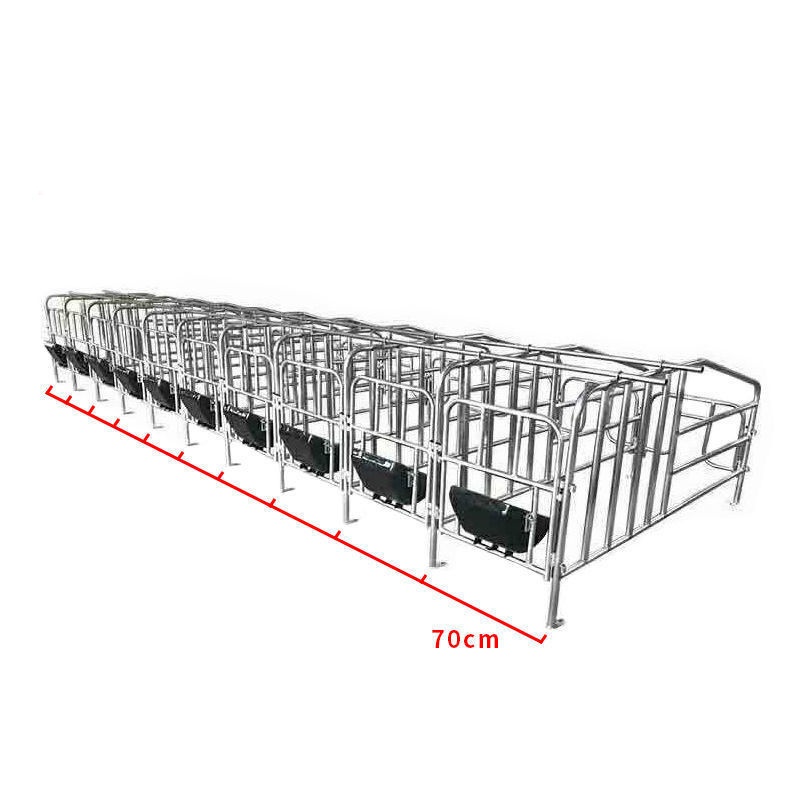Efficient Transportation Solutions for Broilers Using Modern Cages
Nov . 29, 2024 14:32 Back to list
Efficient Transportation Solutions for Broilers Using Modern Cages
The Importance of Broiler Transport Cages in Poultry Farming
In the modern poultry industry, the welfare of chickens during transportation is crucial for both ethical considerations and product quality. Broiler transport cages play a significant role in ensuring that chickens are moved safely and humanely from farms to processing facilities. This article discusses the design, benefits, and best practices associated with these cages, highlighting their importance in poultry farming.
Design and Features of Broiler Transport Cages
Broiler transport cages are specially designed enclosures that allow for the efficient and safe transportation of broiler chickens. Typically made from durable materials like galvanized steel or high-density polyethylene, these cages are engineered to withstand both the rigors of transportation and the weight of the chickens housed within.
Key design features include proper ventilation systems to ensure adequate airflow, which is essential in maintaining the chickens' comfort and health during transport. Additionally, cages often come with adjustable dividers that can accommodate various flock sizes and prevent overcrowding, thus minimizing stress among the birds. Furthermore, ergonomic handles and sturdy bases facilitate easier loading and unloading, ensuring that the transportation process is as smooth as possible for both workers and animals.
Benefits of Using Broiler Transport Cages
The use of broiler transport cages offers numerous advantages for poultry producers. Firstly, these cages enhance the welfare of the chickens during transport. Properly designed cages mitigate the risk of injury caused by shifting or overcrowding, which can occur in poorly managed transport scenarios. This focus on animal welfare not only aligns with growing consumer concerns regarding ethical farming but also helps producers meet regulatory requirements that call for humane treatment of livestock.
broiler transport cage

Secondly, transport cages are instrumental in maintaining the health of broilers. Transport stress can lead to a decline in the immune response of chickens, making them more susceptible to diseases. By providing a secure environment where birds are less likely to be injured or experience extreme temperature fluctuations, transport cages support overall flock health and can reduce mortality rates. Healthier birds also lead to better meat quality, which is crucial for market success.
Moreover, transport cages can significantly impact operational efficiency. The standardized design allows for easy stacking and loading onto trucks or transport crates, optimizing space and reducing the overall transportation costs. This logistical efficiency not only saves time but also helps in maintaining a shorter supply chain, enabling fresher products to reach the market more rapidly.
Best Practices for Using Broiler Transport Cages
To maximize the benefits of broiler transport cages, poultry producers should adhere to certain best practices. Firstly, it is vital to ensure that cages are properly sanitized before use to prevent the spread of diseases. Regular maintenance checks should also be performed to identify any signs of wear and tear, which could compromise the safety of the chickens.
Moreover, during loading and unloading, handlers should be trained to minimize stress and ensure a calm environment. Utilizing gentle handling techniques and avoiding loud noises can make a significant difference in the experience of the chickens. It is also essential to monitor temperature and humidity levels during transport, as extreme conditions can lead to heat stress and other health issues in birds.
Conclusion
In conclusion, broiler transport cages are indispensable tools in the poultry industry, providing a humane and efficient method for transporting chickens. Their design prioritizes animal welfare, supports flock health, and enhances logistical efficiency. By adhering to best practices, poultry producers can optimize the use of these cages, ensuring that chickens arrive at their destination safely and in good condition, ultimately benefiting both the animals and the producers. As consumers increasingly demand ethically sourced food, the importance of transport cages in maintaining high standards of animal welfare has never been more critical.
-
Automatic Feeding Line System-Pan Feeder Nipple Drinker|Anping County Yize Metal Products Co., Ltd.
NewsJul.29,2025
-
Hot Sale 24 & 18 Door Rabbit Cages - Premium Breeding Solutions
NewsJul.25,2025
-
Automatic Feeding Line System Pan Feeder Nipple Drinker - Anping County Yize Metal Products Co., Ltd.
NewsJul.21,2025
-
Automatic Feeding Line System Pan Feeder Nipple Drinker - Anping County Yize Metal Products Co., Ltd.
NewsJul.21,2025
-
Automatic Feeding Line System - Anping Yize | Precision & Nipple
NewsJul.21,2025
-
Automatic Feeding Line System - Anping Yize | Precision & Nipple
NewsJul.21,2025






